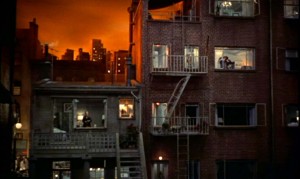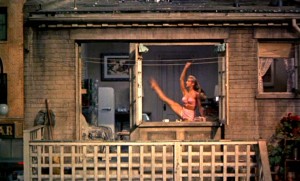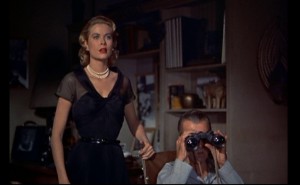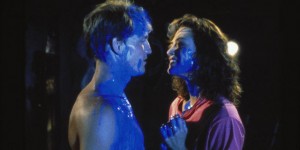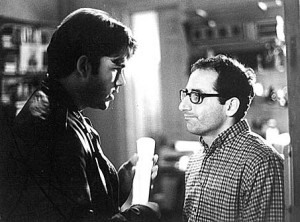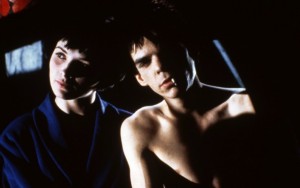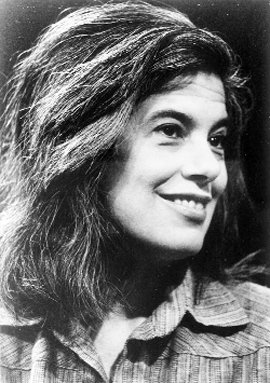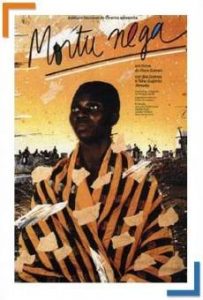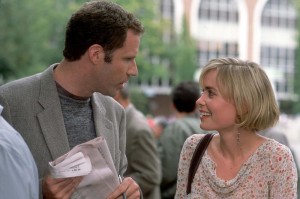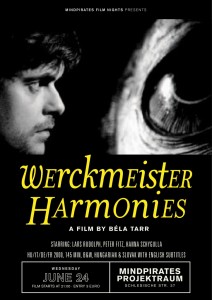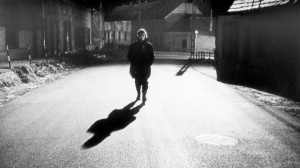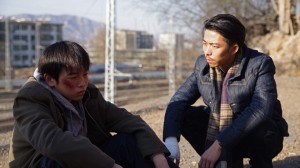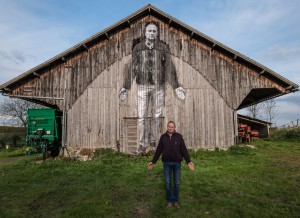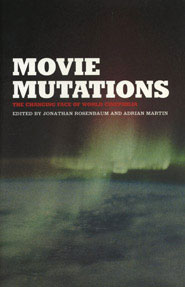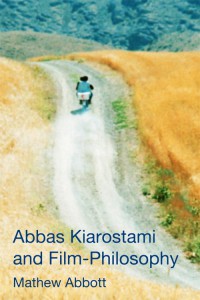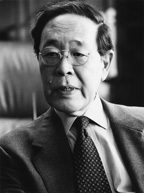Perhaps Alfred Hitchcock’s greatest movie (1954). James Stewart plays a news photographer trapped in his Greenwich Village flat by a broken leg. Out of boredom he starts following the stories of his neighbors across the courtyard, all of which represent variations on the romantic issues of his own relationship with a former model (Grace Kelly) who’s trying to goad him into marriage. When he deduces that one of his neighbors (Raymond Burr) may have murdered his invalid wife, he moves into high gear as an amateur sleuth. Reader critic Dave Kehr called this the most densely allegorical of Alfred Hitchcock’s masterpieces, moving from psychology to morality to formal concerns and finally to the theological. It is also Hitchcock’s most innovative film in terms of narrative technique, discarding a linear story line in favor of thematically related incidents, linked only by the powerful sense of real time created by the lighting effects and the revolutionary ambient soundtrack. With Wendell Corey and Thelma Ritter at her very best. 112 min. (JR)
Chicago Reader Blog post and some responses about OPERA JAWA and its review in the New York Times (January 16-21, 2008)
The following blog post provoked 68 comments, 16 of which I’ve elected to retain here. Sad to say, Jeannette Catsoulis continues to make more wrong calls than any of the Times‘ other movie reviewers –sliming Chuck Workman’s excellent 2014 Magician, the most accurate and conscientious of all the documentaries about Orson Welles for reasons as derisively foolish and as arbitrary as her xenophobic takedown of this remarkable Indonesian feature Maybe it’s just art that makes her nervous. — J.R.
Wednesday, January 16, 2008
The New York Times returns to its philistine roots
Posted by Jonathan Rosenbaum on Wed, Jan 16, 2008 at 4:11 PM
I’ve been reflecting lately that the film coverage these days in the New York Times — thanks to the lively prose of Manohla Dargis, the literary intelligence (if not the film background) of A.O. Scott, and the critical and scholarly chops of Dave Kehr — may be better than it’s ever been before. But then I read the ugly, xenophobic, tossed-off review of Opera Jawa by Jeannette Catsoulis in today’s paper, and I realize that in some ways we might as well be back in the 60s, when a barbarian like Bosley Crowther was smugly ruling the roost. Read more
Swinging Both Ways [HIT AND RUNWAY]
From the Chicago Reader (September 7, 2001). — J.R.
Hit and Runway
**
Directed by Christopher Livingston
Written by Jaffe Cohen and Livingston
With Michael Parducci, Peter Jacobson, Judy Prescott, Kerr Smith, Hoyt Richards, John Fiore, and J.K. Simmons.
Hit and Runway — a comedy about a straight aspiring screenwriter in Greenwich Village taking on a gay playwright as a writing partner — comes from the writing team of Jaffe Cohen, who’s gay, and Christopher Livingston, who’s straight (he also directed). I knew nothing about this semiautobiographical movie until I saw it and nothing about the filmmakers until I looked at the press book, and I was fascinated to learn how semi the autobiographical aspects were.
That this movie exists at all deserves some consideration. It won a couple of festival prizes for best screenplay in 1999 and was copyrighted in 2000. I assume one reason it’s taken so long to get released — apart from being an independent feature without the clout of a major studio behind it — is the way it defies the assumptions of most publicists by refusing to address itself to either a straight or a gay audience to the exclusion of the other. It might not seem subversive for gay and straight viewers to watch the same comedy at the same time or even to laugh at the same jokes, but apparently this possibility conflicts with the way the big studios think about us as customers. Read more
Bad Blood (Mauvais Sang)
One festival brochure described this 1986 feature as a dazzling film noir thriller, yet the distinctive talents of French director Leos Carax have relatively little to do with storytelling. The vaguely paranoid plot concerns a couple of thieves (Michel Piccoli, Hans Meyer) hiring the son (Denis Lavant) of a recently deceased partner to help them steal a cure to an AIDS-like virus, but the noir and SF trappings are so feeble that they function at best as a framing device, a means for Carax to tighten his canvas. The real meat of this movie is his total absorption in the wonderful leads, Lavant and Juliette Binoche, which comes to fruition during the former’s lengthy attempt to seduce the latter, an extended nocturnal encounter that the various genre elements serve only to hold in place. The true source of Carax’s style is neither Truffaut nor Godard but the silent cinema, with its melancholy, its innocence, its poetics of close-up, gesture, and the mysteries of personality. In French with subtitles. 119 min. (JR)
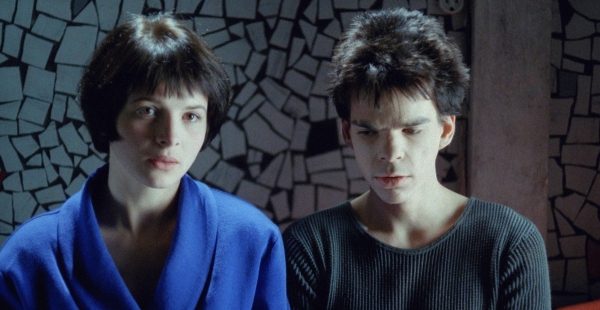
Goodbye Susan, Goodbye: Sontag and Movies
This article was commissioned by and published in the Canadian online magazine Synoptique in its 7th issue, devoted to Susan Sontag and edited by Colin Burnett (dated 14 February 2005, about six weeks after her death), and is also reprinted in my Goodbye Cinema, Hello Cinephilia. — J.R.
Goodbye Susan, Goodbye: Sontag and Movies
by Jonathan Rosenbaum
I don’t think that Susan Sontag was a great film critic; to hear her tell it, she wasn’t really a critic at all. But it’s still hard to overestimate her importance as an American writer in relation to movies. The last of the great New York intellectuals associated with Partisan Review, she was the only one in that crowd who understood and appreciated film in a wholly cosmopolitan manner, as a part of art and culture and thought —- something that couldn’t be said of Hannah Arendt, Saul Bellow, Irving Howe, Alfred Kazin, Mary McCarthy, Philip Rahv, Harold Rosenberg, Edmund Wilson, or any of the editors at the New York Review of Books. Even if one considers the most sophisticated members or fellow travelers of that group who functioned as film critics —- James Agee, Manny Farber, Pauline Kael, Dwight Macdonald, Delmore Schwartz, Parker Tyler, Robert Warshow —- none of them could claim quite the same global, cultural, and historical reach that Sontag had. Read more
Mortu Nega
From the August 11, 2000 Chicago Reader. — J.R.
One of the best contemporary war films I know is this singular 1988 feature, the first by Guinea-Bissau filmmaker Flora Gomes (Po di sangui). The first half, as elemental and as unadorned as Samuel Fuller’s The Steel Helmet, concentrates on women fighting alongside guerrillas at the end of Guinea-Bissau’s war of independence in 1973, attacked by Portuguese helicopters as they travel on foot close to the border. The second half, more diffuse and at times more rhetorical, deals with the ambiguous conditions of the war’s aftermath. The title means “those whom death refused,” and true to that notion the heroine (Bia Gomes) has been fighting for about a decade. Gomes (no relation to the director) manages to convey the loss of her children in a wordless and underplayed moment that shook me to my core. Flora Gomes appears in a cameo as president of a postwar sector. 93 min. Film Center, Saturday, August 12, 4:00, and Thursday, August 17, 6:00.
–Jonathan Rosenbaum
Give Up the Gimmick [MELINDA AND MELINDA]
From the March 25, 2005 Chicago Reader. — J.R.
Melinda and Melinda
* (Has redeeming facet)
Directed and written by Woody Allen
With Radha Mitchell, Will Ferrell, Chloe Sevigny, Chiwetel Ejiofor, Jonny Lee Miller, Brooke Smith, Wallace Shawn, and Larry Pine
Brainteaser movies have been enjoying a certain vogue in the past few years. The taste for them can be traced back to at least 1994 and the jigsaw-puzzle narrative of Pulp Fiction. But the trend got started in earnest in 2000, with the release of Memento, which tells a complicated story backward, and it gained further momentum two years later when the same gimmick was combined with sex and violence in Irreversible. Eternal Sunshine of the Spotless Mind and Kill Bill have more substantial characters than either of those films, yet part of their appeal lies in the challenge of putting scrambled narrative pieces together.
There are people who say they don’t like to read or write but spend plenty of time doing both on the Internet. Similarly, there are people who say they don’t like to think while watching movies yet don’t mind using their brains when it comes to “puzzle” movies. But there are different kinds of thinking. Read more
En movimiento: Journalistic Distortions as Marketing Strategies
My column for the abril 2018 issue of Caiman Cuadernos de Cine. — J.R.
“I personally can’t define the difference between a documentary and a narrative film,” Abbas Kiarostami once said to me, adding that he considered the difference between a good movie and a bad one more important. I would further note that films that blur distinctions between documentary and fiction, including Kiarostami’s, are sometimes better because they do so. This was recently brought home to me when I belatedly discovered that one of my favorite films of 2017, Heinz Emigholz’s Streetscapes [Dialogue], wasn’t a scripted restaging in Uruguay of the filmmaker’s psychoanalysis with its two original participants, as I had naïvely assumed, but a scripted restaging with an American actor and an Argentinian filmmaker — a discovery that made the film even more provocative and impressive.
When I start to reflect on the widely different ways in which documentaries and fictional narratives are shown and marketed, I begin to realize that obfuscating such issues are often marketing decisions, much as obfuscating distinctions between art and politics often turn out to be. As I suggested in my last column, while decrying the public indifference to Harvey Weinstein’s artistic crimes, this is business as usual in current transatlantic discourse — a recognition that Weinstein’s sexual crimes are “commercial” and his artistic crimes “non-commercial”. Read more
AN ELEPHANT SITTING STILL + WERCKMEISTER HARMONIES
My contribution to MUBI Notebook’s Fantasy Double Features of 2019 (posted in late December). — J.R.
NEW: An Elephant Sitting Still (Hu Bo, China)
OLD: Werckmeister Harmonies (Béla Tarr, 2000)
Some of the differences between the late Hu Bo (1988-2017) and his mentor Béla Tarr may be just as important as their similarities. The latter made black comedies whereas An Elephant Sitting Still, Hu’s only feature, doesn’t find anything to laugh about. Even though the metaphysical and novelistic cast of both artists allows them to treat a group of lost individuals as a cosmos, with Tarr’s visible whale carcass in Werckmeister Harmonies apparently rhyming with Hu’s offscreen elephant, the compulsion of Tarr to follow his characters isn’t the same thing as Hu’s compulsion to embrace his own by moving ahead of them in the process of encircling them. Both ultimately offer blistering sociopolitical critiques of their respective societies in spite of their metaphysical trappings. The task of making blighted, hateful, and mean-tempered fools lovable is an essential part of both Satantango and Elephant, but what makes the latter fools slightly more redeemable is the degree to which they try to connect with one another, even if the results are futile. Read more
FACES PLACES
From the Chicago Reader (October 12, 2017). — J.R.
Faces Places
In this French road movie, whose original title juxtaposes faces with villages, 89-year-old filmmaker Agnès Varda follows 33-year-old photographer and installation muralist JR across the countryside as he and his team photograph working people, enlarge these shots into monumental black-and-white likenesses, and paste them onto the sides of the buildings where the subjects live and work. From the opening-credit animation onward, this delightful, digressive, breezy collaboration, staged to look more spontaneous than it possibly could be, celebrates and enhances both artists, repeatedly finding the extraordinary in the ordinary and growing more reflective and melancholy only in its Swiss epilogue. For Varda, this is a spinoff of sorts to The Gleaners and I (2000) and The Beaches of Agnès (2008); for me it’s a welcome introduction to the work of JR. —Jonathan Rosenbaum
Thinking about (Personal) History Lessons: The Movie Paintings of Manny Farber
This piece had a somewhat tortured history. Commissioned but rejected by Artforum (for reasons that were never explained) circa 1982, it first appeared in a special issue of New Observations (#36, 1983) edited by the late Gilberto Perez, entitled “Horses, Hegel and Film,” where by necessity the illustrations were relatively sparse. In its present form, it first appeared in the 12th issue of the online journal Rouge in 2008. Two excerpts from it are reprinted in a superb recent collection, Manny Farber: Paintings and Writings, that I’m proud to be part of. — J.R.
| 1. Manny Farber, Negative Space (New York: Da Capo, 1998), p. 361. | ‘The brutal fact is that they’re exactly the same thing’, Manny Farber replied in 1977 to an interviewer inquiring about the relationship between his dual activities as a painter and film critic. (1) The remark points to a two-part obsession that by now has persisted for more than four decades. A master at perceiving the delicate nuances of brutal facts, Farber has always had an uncanny knack for hitting on truths in a language of wisecracking braggadocio that eliminates any possibility of a dispassionate or precise scientific observation. With his feet firmly planted in the anonymous turf of an underground termite (to conflate two of his favourite terms), Farber paradoxically aims at a notion of bull’s-eye that can exist only in a marketplace context where objects and ideas compete for our attention. |
Simon Field & The Original SHADOWS
Written for the FIPRESCI website in February 2004. For more on the original Shadows, go here.
To the best of my recollection, the first time I ever met Simon Field, the departing artistic director of the Rotterdam International Film Festival, was in the early 1970s — either 1970 or 1973 — when he was programming a festival of experiment filmmaking at the National Film Theatre in London (something he informs me he did both of those years). From the beginning of his eight years at the Rotterdam Festival, a major part of Simon’s special contribution has been not simply an emphasis on experimental film but also a kind of investment in that branch of cinema that perceives and highlights its interconnections with the other arts as well as with other kinds of cinema. There has always been something refreshing about his pluralistic and nonsectarian way of defining film experiment, and one can see this in the range exhibited by Afterimage, the invaluable magazine he coedited in England with Ian Christie for many years — an occasional publication which found room for Raoul Ruiz as well as Michael Snow, Noël Burch as well as Steve Dwoskin, and Jean-Luc Godard as well as Stan Brakhage. Read more
From Movie Mutations to 1968: An Interview with Jonathan Rosenbaum in Budapest
The following interview took place in a hotel lobby in early February 2020. My friend Kinga Keszthelyi, who arranged my visit to Budapest, is on the left, and Simon is on the right. — J.R.
From Movie Mutations to 1968:
An Interview with Jonathan Rosenbaum in Budapest
Simon Petri-Lukács
Jonathan Rosenbaum visited Budapest earlier this year to give a lecture about Abbas Kiarostami and Orson Welles. During this special seminar, he discussed the similarities in the two filmmakers’ relations to self-criticism and the dominating presences of investigations, interrogations and unsolved mysteries in both oeuvres.
I felt great liberation when I discovered Jonathan Rosenbaum’s criticism at the end of my teenage years. The stupidity of critics I was aware of at the beginning of my cinephilia actually led me to the nonsensical conclusion that I had to become a filmmaker to speak about other people’s films in an acceptable and intellectually satisfying way. On my first encounter with Jonathan’s work, I found what I didn’t know I was seeking and it changed my attitude forever. Having said that, it’s quite obvious that I was over the moon to be able to interview him.
I have been interviewing Alexander Horwath for the last two years about several topics and my main interest was to ask Jonathan about his book, Movie Mutations. Read more
Review of ABBAS KIAROSTAMI AND FILM-PHILOSOPHY
From the April 2017 issue of Sight and Sound. — J.R.
ABBAS KIAROSTAMI AND FILM-PHILOSOPHY _____________________________________________________
By Mathew Abbott. Edinburgh University Press. 167 pp. UK£70.00. ISBN 9780393243123.
__________________________________________________________
Reviewed by Jonathan Rosenbaum
It isn’t only the hefty price that makes this volume look forbidding to most readers of this magazine. However inviting it might seem to regard the features of Abbas Kiarostami as genuine works of philosophy—not merely as philosophical statements but as brazen acts that challenge viewers into making them rethink and reformulate many of their assumptions about both life and cinema—the academic etiquette of tracing this concept through a labyrinth of other philosophers and other Kiarostami critics may often prove to be less user-friendly to the lay reader. And it must be admitted that for readers more accustomed to journalistic paraphrase than to the rigours of scholarly hair-splitting and jargony word-spinning, a bumpy ride is in store. Mathew Abbott’s Introduction pivots on page 4 from Kiarostami to Stanley Cavell, but by this time the author has already had recourse to the philosophy of Jean-Luc Nancy on the previous page, and he will be chasing after Wittgenstein, Heidegger, and Descartes soon afterwards
Even so, this book is after much bigger game than a daunting bibliography. Read more
Dialogue Between Shigehiko Hasumi and Jonathan Rosenbaum on Howard Hawks and Yasuzo Masumura (Tokyo, 3 December 1999)
This dialogue is part of a section called “Two Auteurs: Masumura and Hawks,” included in Movie Mutations: The Changing Face of World Cinephilia (2003), a volume I co-edited with Adrian Martin. It was preceded by my essay, “Discovering Yasuzo Masumura: Reflections on Work in Progress,” and, before the “epilogue,” it was followed by Hasumi’s own essay, “Inversion/ Exchange/Repetition: The Comedy of Howard Hawks”. — J.R.
Jonathan Rosenbaum: When did you first write about Howard Hawks?
Shigehiko Hasumi: In 1977, just after he died. At that time, Hawks was so underestimated in Japan that no film magazine wanted an article on him. I published it in a literary magazine.
JR: And is there a particular period in his career that you prefer?
SH: Yes, from Bringing Up Baby (1938) to His Girl Friday (1940). Of course, his two films noirs with Lauren Bacall and Humphrey Bogart, To Have and Have Not (1944) and The Big Sleep (1946), impress me deeply. But the comedies in this period seem to me the highest accomplishment of his mise en scène. For me, Hawks is essentially a filmmaker of comedy. In that sense, I could say also that my preference goes to the period between Twentieth Century (1934) and Monkey Business (1952). Read more

